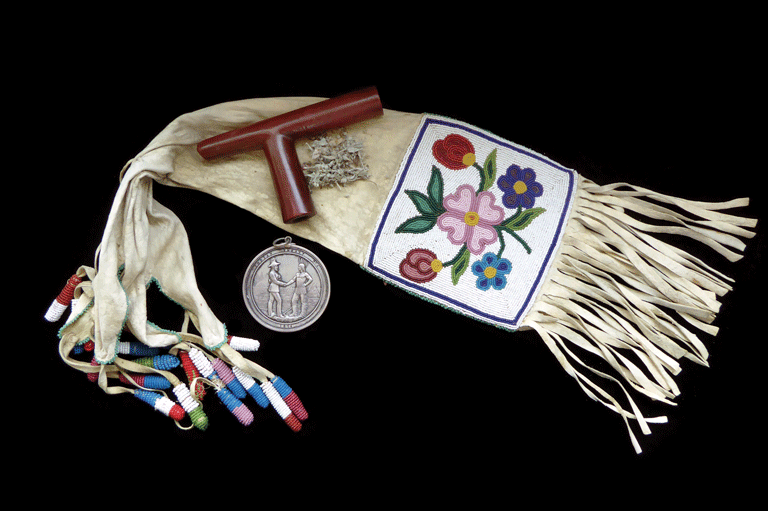The Numbered Treaties

In Canada, Treaties represent the source of First Nations peoples’ unique nation-to-nation relationship with the Crown.
In Western Canada, the Numbered Treaties 1 to 11 are a series of historic post-Confederation Treaties that were made in rapid succession over a short period of time from 1871 to 1921 between First Nations peoples and the Crown (Canada). They are as relevant today as they were when they were signed.
The Numbered Treaties were used as political tools to secure alliances and to ensure that both parties could achieve the goals they had set out for their peoples — both at the time of Treaty-making and into the future.
Treaty-making was historically used among First Nations peoples for such purposes as inter-tribal trade alliances, peace, friendship, safe passage, and access to shared resources within another nation’s ancestral lands.
Respect and reciprocity were foundational principles that resulted in tribal alliances among nations, such as the Council of Three Fires (Three Fires Confederacy); Five Nations that evolved to Six Nations (Iroquois Haudenosaunee Confederacy); Wabanaki Confederacy; and Seven Council Fires (Oceti Sakowin).
Examples of early inter-tribal nation-to-nation Treaties among First Nations were the Dish With One Spoon Treaty (one of the earliest known North American Treaties), and the Great Binding Law (circa 1722).
These early Treaties provided frameworks for relationships of coexistence. They encompassed First Nations epistemologies and ceremonial protocols — their beliefs, values, relationships, laws, languages, pipe ceremonies symbolizing their nationhood, and sense of responsibility for the past, present, and future.
This principle of responsibility and protocol remains part of First Nations gatherings where oral history is the vehicle used to recall events of the past to help to understand how we got to where we are today.
With 7 uniquely curated newsletters to choose from, we have something for everyone.

This is an original photograph of the conclusion of negotiations for Treaty No. 3 at the North West Angle. It was taken by Wright Bros. Photographers of Rat Portage, now Kenora, Ontario. The photo shows a gathering of First Nations Treaty negotiators. In the front row are four men, three of whom are wearing medals that represent Canada’s Treaty promises. Two of the men hold pipes with long pipe stems of the type used to invoke the Creator as witness to verify First Nations‘ and the Crown’s commitments to the terms of the Treaty.
The commemoration of the 250th anniversary of the Treaty of Niagara, held in 2014, is an example of this accountability. At this event, nations gathered to hear the retelling of historical relations and commitments recorded on historical wampum belts from that period.
It is within this context that First Nations people continue to make and to renew Treaty relationships and to engage in dialogues to reiterate the original spirit and intent of agreements that have survived hundreds of years. Elders and Knowledge Keepers who have retained their first languages, their traditional teachings, and their connection to the Creator and to Natural Law remain central to these processes.
“We have a responsibility to keep the Treaty alive in our lifetimes for our future generations,” said Giizis-Inini, Anishinaabe Elder Harry Bone. “The horizon that we see — we are the ones who have to look after the future, and we have to secure these teachings for the next generations.”
Diplomacy leading up to the Numbered Treaties in Western Canada is part of First Nations’ Treaty-making history that remains a major contribution by First Nations peoples to nation-building for present-day Canada.
The coming of new people from other lands was part of First Nations’ prophecies; so new peoples were expected. First Nations viewed Treatymaking with Newcomers as an extension of the nation-tonation Treaties they created with each other, as nations.
These early relations between First Nations peoples and European Newcomers were peaceful, friendly, and respectful, for the most part. Trade, military, and alliance agreements were critical for European empires to gain a hold in the Americas.
As relationships evolved and the competing interests of the British, French, and Americans became more aggressive, First Nations needed to be more strategic in their alliances.
Following their experiences with the Seven Years War (1756–63), the Royal Proclamation of 1763, the Treaty of Niagara (1764), the War of 1812, the Selkirk Treaty of 1817, Canadian Confederation in 1867, and the Riel Resistance (1870), it was evident to First Nations peoples that the influx of settlement would continue to impact their ways of life and to alter their relationships to their ancestral lands.
They knew they would need to rely on their Treaty-making diplomacy to try to build and to solidify a relationship that would provide them with strategic alliances and assurances that their way of life and their relationship to what was left of their ancestral lands would be secured for successive generations. In exchange, they knew they would be sharing some of their land with the Newcomers.
However, First Nations peoples never envisioned that the long-term outcome of such Treaty relations would be their occupying less than three per cent (3.5 million hectares) of their homeland, on 617 small communities the federal government calls “reserves.”
The Treaties were seen as reiterating peaceful alliances, securing assurances for both parties to share the wealth associated with First Nations ancestral lands, and ensuring the respectful right for each party to retain their own way of life.
The Numbered Treaties were made between 1871 and 1921 but not during a twenty-two-year gap between 1877 and 1899.
Historians attribute the gap to the Canadian government’s priorities of supporting agricultural settlement across the prairies and securing access to land for the railway before turning its interests to what the northern country could provide by way of mining resources, harvesting timber, and accompanying settlement.
During this period, First Nations were reviewing the terms and conditions of the signed Treaties and beginning to organize across Treaty territories so they could strengthen their voice.
Both parties to these historic Numbered Treaties had a sense of urgency. The 1880 book The Treaties of Canada with the Indians of Manitoba and the North-West Territories, by Alexander Morris, says First Nations peoples saw the Numbered Treaties as a way of solidifying a peaceful and enduring kinship relationship with the Crown.
The Treaties were seen as reiterating peaceful alliances, securing assurances for both parties to share the wealth associated with First Nations ancestral lands, and ensuring the respectful right for each party to retain its own way of life.
The Numbered Treaties in the Prairie provinces were also about dealing with urgent practical matters of the day, such as the need for new livelihoods, the health needs of people afflicted by epidemics, and ongoing settler encroachment on First Nations’ lands.
Legal scholar Aimée Craft, in her 2013 book Breathing Life into the Stone Fort Treaty: An Anishinabe Understanding of Treaty One, states that in 1871 the First Nations’ spirit and intent of Treaty making was about establishing kinship relationships and incorporating established protocols that had worked for them in their previous trade agreements with the Hudson’s Bay Company and other commercial traders.
As Elder Bone recounts, First Nations peoples understood the Royal Proclamation as King George III’s document, which recognized First Nations peoples as nations with their own territories; First Nations peoples believed that the Crown would provide protection to them in exchange for sharing their lands. First Nations peoples expected that the spirit and intent of this understanding would prevail in good faith.
For Canada, the Numbered Treaties made it possible for then Prime Minister John A. Macdonald to secure alliances and “dominion” over lands to the west and north, connecting the east to the west from sea to sea and allowing for settlement and agriculture. This would also prevent the Americans from annexing the Northwest.
As Arthur Ray, Jim Miller, and Frank Tough state in their book, Bounty and Benevolence: A History of Saskatchewan Treaties, it was necessary for the Crown (Canada) to make Treaty with the First Nations so that the Crown could guarantee peace and acquire land for settlement; in exchange, the First Nations would receive the Crown’s bounty and benevolence.
The newly confederated Canada was focused on bringing territories like Rupert’s Land and the North-West Territory into Confederation. The Royal Proclamation of 1763 remained a guideline for Canada to achieve this goal in a timely manner. First Nations peoples were key to achieving this goal.
Save as much as 40% off the cover price! 4 issues per year as low as $29.95. Available in print and digital. Tariff-exempt!

First Nations had not anticipated the Canadian government’s plans to administer its constitutional responsibility for “Indians and lands reserved for Indians” by introducing restrictive policies such as the Indian Act of 1876 (the same year Treaty No. 6 was signed) and the pass system of 1885, which regulated the movement of First Nations people off reserve lands.
These policies shifted the Treaty relationship from a respectful kinship relationship that First Nations believed they had secured through the Treaty-making process to a trustee-ward relationship in which they had no voice and no control over their lives or their lands. An era of respectful Treaty relations had come to an abrupt halt.
In the years since the Treaty-making negotiations, oral history accounts have asserted that some of the promises that were made did not find their way into the written texts of the Numbered Treaty documents. For example, historical evidence shows that the Crown’s attitude to Treaty-making shifted from the 1870s to the 1880s.
Immediately following 1871, First Nations made attempts to have the Crown deal with the “outside promises” (as documented by Craft) of Treaty No. 1 (1871); the Paypom Treaty document associated with Treaty No. 3 (1873) promises (the Paypom document is an original set of notes made for Chief Powasson at the signing of Treaty No. 3); and the Black Book associated with Treaty No. 5 (1875) (as described by Elder William G. Lathlin and Elder D’Arcy Linklater), which is yet to be found.
These instances serve as a reminder that oral history is critical for gaining a deeper understanding of what was said and what was recorded or not recorded.
The oral history of First Nations peoples is beginning to bring balance to the narrative about the pre- and post-Confederation history of this land now called Canada. This is shifting the narrative about Canada’s history, bringing more balance to the story and bringing it into alignment with truth telling.
Modern historians such as Ray, Miller, and Tough have acknowledged that First Nations peoples were more active in shaping Treaties in this country than has been documented by earlier historians.
This interpretation is most consistent with the oral tradition of First Nations Elders regarding Treaty knowledge; the emerging breadth of publications on our shared history by Indigenous peoples, including works by Craft and Donna Sutherland; and works by others who provide a fuller understanding of policy and Treaty making. It is refreshing to witness when historical thinking begins to shift, and restorative history begins to emerge, to bring balance to truth.
Today our shared reality is that, as First Nations peoples, Canadians, and “new Canadians,” we are all now eating out of the “Dish With One Spoon.”
As historian Rick Hill, Tuscarora from Six Nations of the Grand River Territory, recounts the teaching from the Dish With One Spoon Treaty:
“Only take what you need, always leave something in the dish for everybody else, and keep the dish clean.”
This reality requires everyone to take responsibility for the original spirit and intent of this first Treaty and all successive Treaties. In this way, all citizens can do their part to assure that successive generations can continue to learn about their benefits — acquired through Treaty making — from First Nations’ shared ancestral lands and to commit to growing in their understanding of the enduring Treaty relationship.
Yes, indeed, we are all Treaty people. The Numbered Treaties are part of this shared benefit that is extended to all Canadians and to future generations. The challenge for all Canadians is to find ways to work together to better understand the original spirit and intent of Treaties made with the Crown (Canada).
Artifacts from the Numbered Treaties
Courtesy of the Manitoba Museum. Photos and text by Dr. Maureen Matthews.

The first medal offered in Treaty negotiations in 1871 — the small medal (top left) with oak leaves — was rejected by chiefs who judged it inadequate for Treaty making.
The second, larger medal (centre), based on Canada’s Confederation medal, was initially well received, until Chiefs realized it was only silver plated. Silver in Anishinaabe is zhooniyaawaabik, money metal, and it should be pure. This medal was not and the Chiefs rejected it when the silver began to wear off.
Finally, in 1873, the Commissioner presented the now famous handshake medal of pure silver, top right, which was used until Queen Victoria’s death in 1901.

This headdress, which dates to the 1870s, is one of the oldest in the Manitoba Museum and highlights First Nations leadership at the time of Treaty making. Most of the Chiefs who negotiated the Treaties had long experience with the fur trade and trade Treaties.
The First Nations experience with the Numbered Treaties would have been framed by the kind of prior fur trade relationships they had established and First Nations ideas about leadership and consensual decision making, which are embodied in this headdress.

This pipe belonged to the Cree Chief Piapot, who signed an adhesion to Treaty No. 4 in 1875 at Fort Qu’appelle, Saskatchewan. Piapot believed he was getting a reserve for his people in their hunting grounds in the Cypress Hills of Western Saskatchewan.
However, when he was assigned a reserve on the opposite side of the province, he fought the unfairness of it for the rest of his life. Piapot gave this pipe to the minister who conducted his daughter’s wedding and it was later donated to the Manitoba Museum.
For First Nations peoples, the pipe is a symbol of their nationhood and sovereignty, as it represents a direct connection to the Creator.
Register to receive your FREE educational package devoted to Treaties and the Treaty Relationship.
Packages are aimed at Grades 2–7 and Grades 7–12, and available in both English and French.
Canada's History magazine was established in 1920 as The Beaver, a Journal of Progress. In its early years, the magazine focused on Canada's fur trade and life in Northern Canada. While Indigenous people were pictured in the magazine, they were rarely identified, and their stories were told by settlers. Today, Canada's History is raising the voices of First Nations, Métis and Inuit by sharing the stories of their past in their own words.
If you believe that stories of Canada’s Indigenous history should be more widely known, help us do more. Your donation of $10, $25, or whatever amount you like, will allow Canada’s History to share Indigenous stories with readers of all ages, ensuring the widest possible audience can access these stories for free.
Any amount helps, or better yet, start a monthly donation today. Your support makes all the difference. Thank you!
Themes associated with this article
Advertisement
More from the Treaties issue
These articles, as well as the corresponding educational resource package, can be found on the French side of our site.

Encouraging a deeper knowledge of history and Indigenous Peoples in Canada.
The Government of Canada creates opportunities to explore and share Canadian history.

The Winnipeg Foundation — supporting our shared truth and reconciliation journey.













